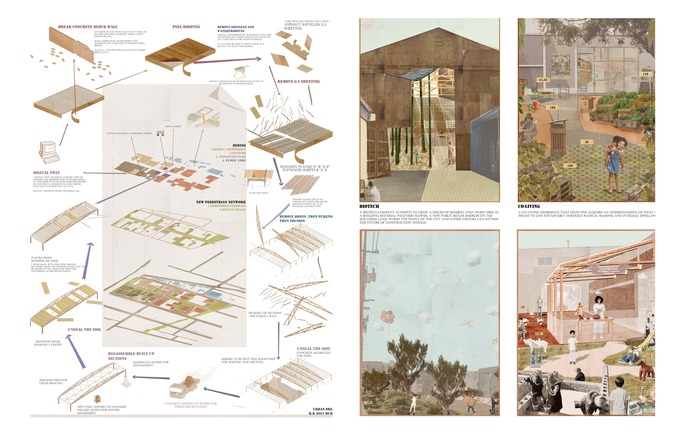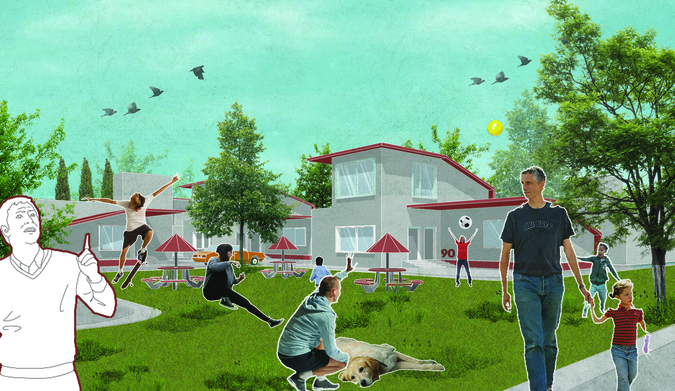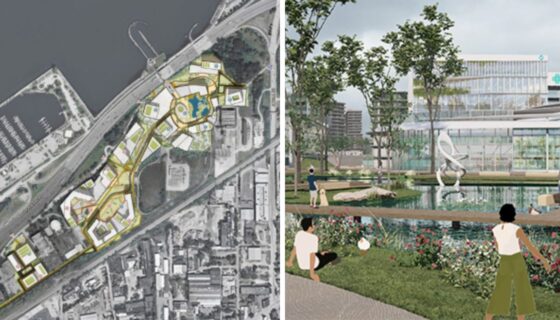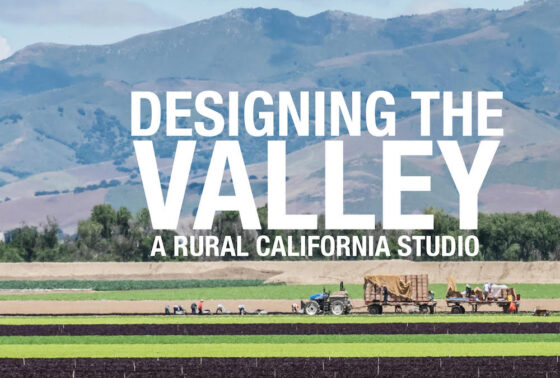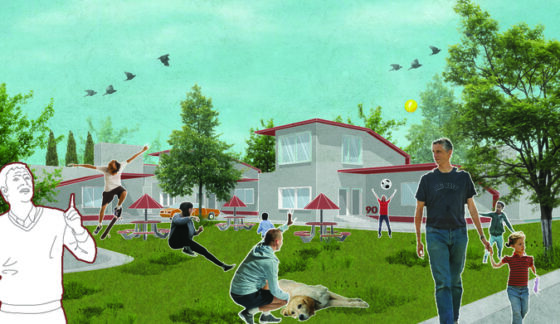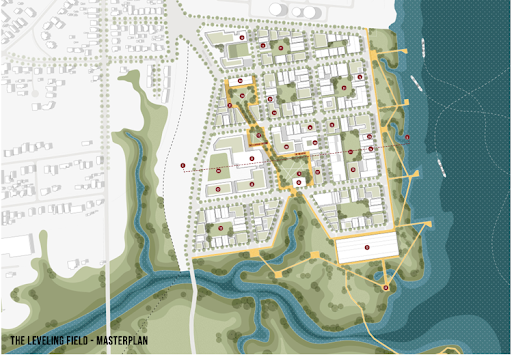Master of Urban Design
In Berkeley’s Master of Urban Design — the only degree program of its kind in California — you’ll engage diverse communities to imagine the cities of the future. The program is centered on researching and designing alternative forms of urbanism for a range of real-world conditions, from dense post-industrial cities in the inner Bay Area to small towns on the rural and urban periphery.
In courses led by Berkeley faculty from across disciplines, you’ll develop a deep understanding of cities and the forces that shape them. After three intensive semesters of courses and studios, you’ll be prepared to take what you’ve learned in the context of California and apply it anywhere in the world.

About the Master of Urban Design
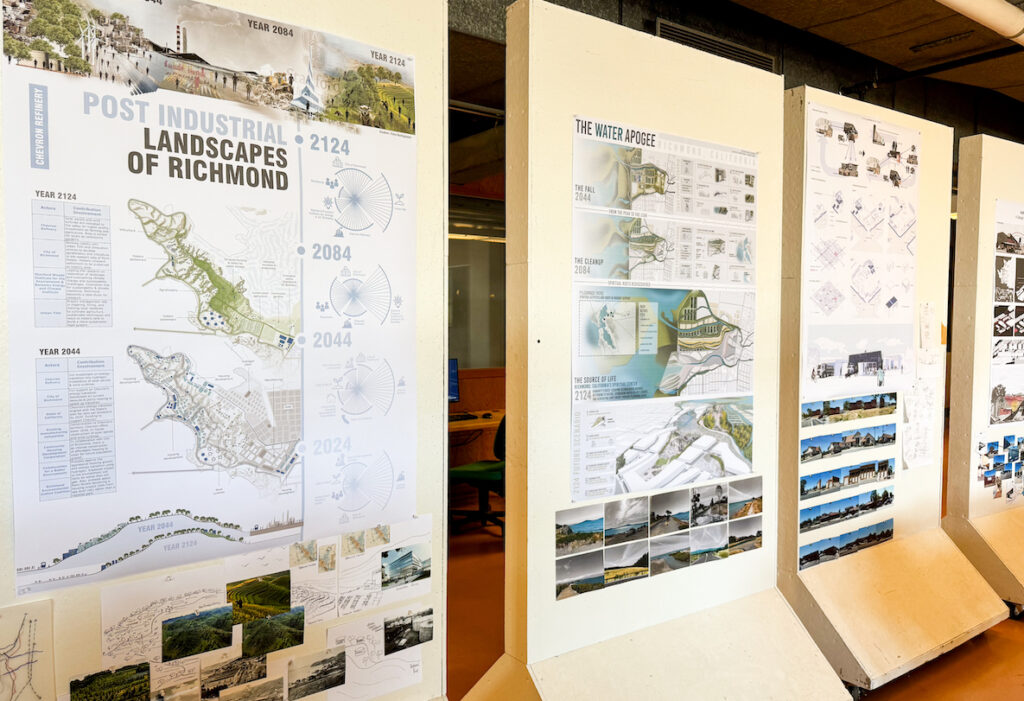
Berkeley MUD is a one-year STEM-designated program for anyone with a prior professional degree in architecture, landscape architecture, or city planning who wants to learn advanced skills and tackle urgent urban design issues. In our program, you’ll engage with sites at urban, suburban, and territorial scales, all requiring inventive design strategies supported by research and analysis and grounded in economic, political, and social contexts.
Over the course of three semesters — summer, fall, spring — you’ll learn to work effectively in teams across a large range of scales and develop a deep understanding of urban places and the social interactions that shape them. The program culminates in the thesis studio in the spring semester, where you realize an advanced design project based on your own passions and concerns.
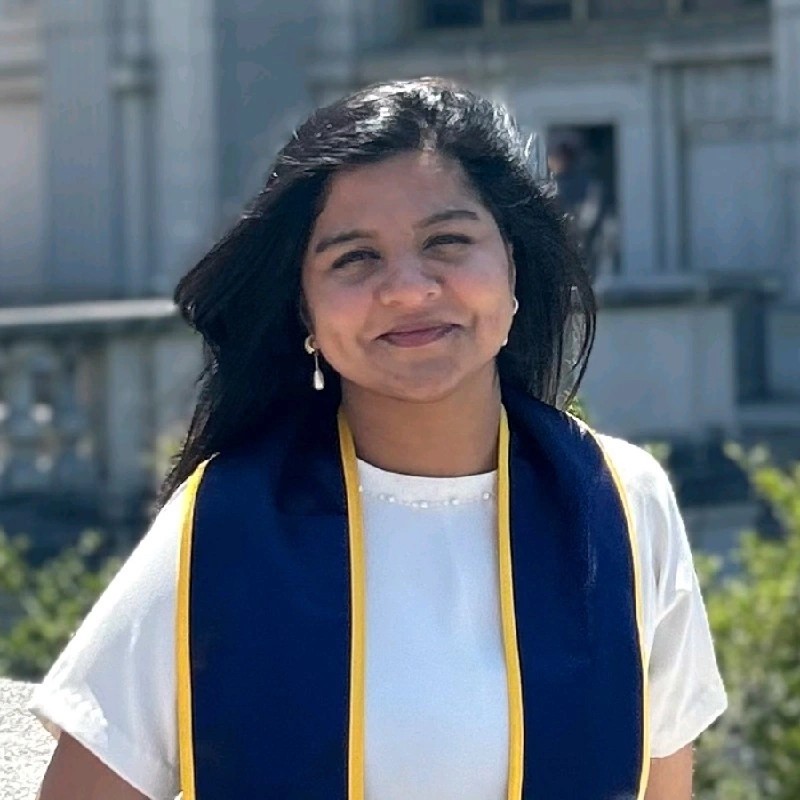
“At Berkeley, we understand that urban design transcends physical planning — it is about envisioning and fostering the social and emotional fabrics of urban life.”
Why Berkeley

As a UC Berkeley graduate student, you will be studying at the number one public university in the United States alongside the brightest and most passionate students from across the globe. Berkeley’s environment of critical inquiry, discovery, and innovation is informed by a deep commitment to contributing to a better world.
California is the ideal laboratory for creating new forms of socially and environmentally resilient urbanism. With a diverse population of 40 million, who live in megacities and small rural towns — and everything in between — California offers boundless opportunities. Always at the cutting edge, California is at the forefront of progressive policies and innovative solutions to meet the challenges of a changing climate and rising socioeconomic inequality.
About the College of Environmental Design
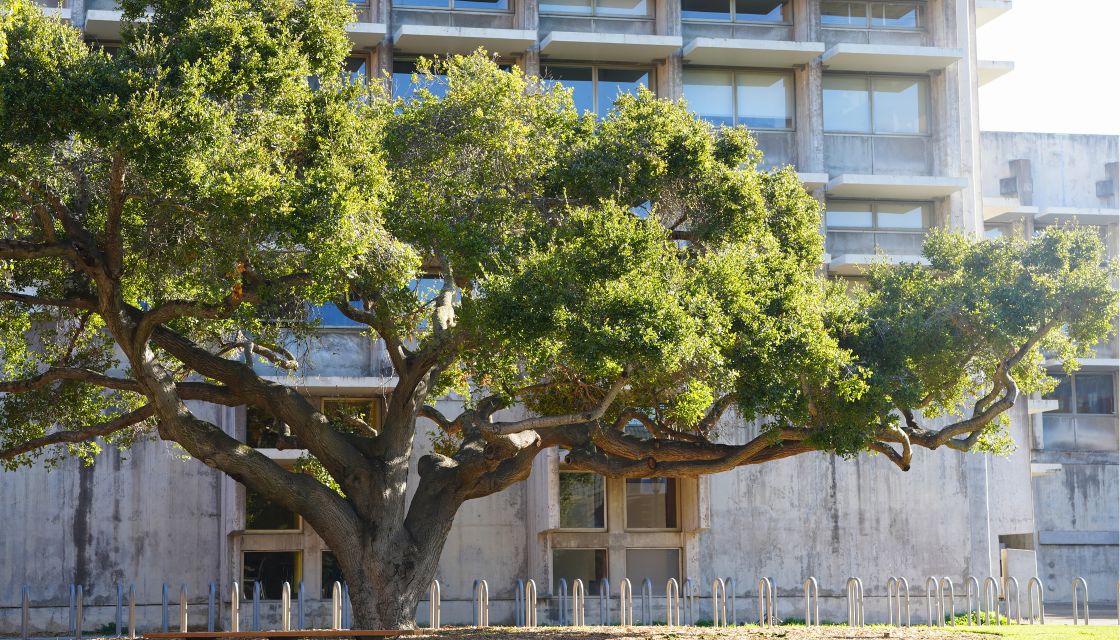
The College of Environmental Design — the top-ranked public school in the U.S. for architecture and the built environment (2025 QS World University Rankings) — is UC Berkeley’s home for theory, research, innovation, and practice focused on the built environment. Home to three departments, four undergraduate majors, and more than a dozen graduate and professional degree programs, the college is an interdisciplinary creative community dedicated to solving the world’s most pressing environmental problems. Research and teaching focus on design excellence, climate solutions, equity and social justice, and new materials and technologies.
FACULTY
Faculty from across the College of Environmental Design lead and teach in the Master of Urban Design program, bringing a variety of disciplinary perspectives.
Core Faculty + Executive Committee
-
 Professor of Landscape Architecture & Environmental Planning; Faculty Program Director, Master of Urban Design
Professor of Landscape Architecture & Environmental Planning; Faculty Program Director, Master of Urban Design -
 Associate Professor of Architecture and Urban Design; Lalanne Chair in Real Estate Development, Architecture & Urbanism (2015–2019)
Associate Professor of Architecture and Urban Design; Lalanne Chair in Real Estate Development, Architecture & Urbanism (2015–2019) -

CURRICULUM
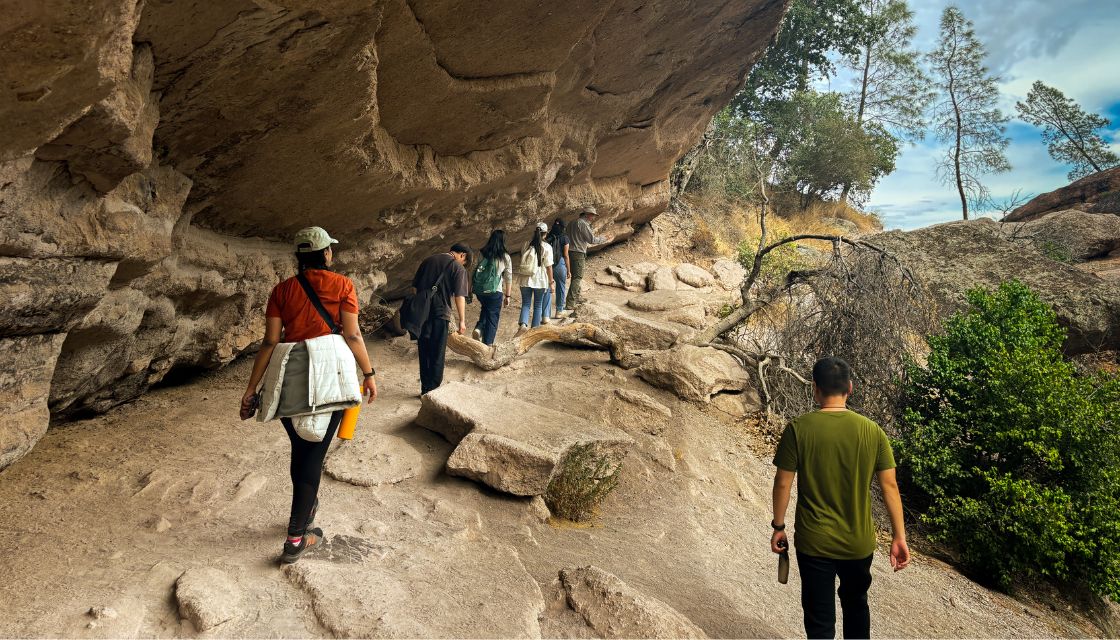
As a MUD student, you will complete one year (three consecutive semesters) in residence, which includes 32 units of coursework, the core curriculum, and an advanced design project or master’s thesis. Each student completes the following core curriculum:
- ENV DES 201: Fundamentals Studio (Summer, 5 units)
- ENV DES 251: Discourses in Urban Design (Summer, 3 units)
- ENV DES 252: Thesis Research and Preparation (Fall, 3 units)
- ENV DES 202: Advanced Urban Design Studio or equivalent (Fall, 5 units)
- ENV DES 253: Thesis Studio (Spring, 5 units)
- About the Core Curriculum
- Additional Requirements
ENVDES 201 — Fundamentals of Urban Design Studio (SSb, 5 units)
The advanced design studio involves collaborative work on problems that are large in scope, yet require attention to spatial organization and design details. This core urban design studio differs from traditional studios in several ways. First, the level of work expected of students with advanced standing allows the exploration in depth of complex urban design problems that normally exceed the capacities of first professional degree students. Second, the studio design work is broader in scope and more integrated in approach than is normally possible; the range of professional backgrounds that the student and faculty participants bring to the discussions and design explorations enables all students to recognize and work with the interrelated problems of urban design and to learn how to work together effectively in interdisciplinary teams. Third, the work examines both public and private development opportunities in existing built environments in urban, suburban, and territorial scales. We expect to foresee urban issues and design problems that will soon be coming into public focus and to conduct and present exploratory studies that will help shape those issues for further professional study and public involvement.
ENVDES 202 — Advanced Urban Design Studio (F, 5 units)
Every year visiting faculty teach studios addressing urgent contemporary issues facing urban, suburban, rural, and territorial areas. See student work section for descriptions and work from recent studios.
ENVDES 251 — Discourses and Methods in Contemporary Urban Design (SSc, 3 units)
This seminar introduces students to the M.U.D. program and faculty resources. Lectures present current Issues in urban design practice followed by a seminar discussing contemporary design approaches.
ENVDES 252 — Thesis Research and Preparation (F, 3 units)
This seminar focuses on developing individual urban design interests as the basis for next semester’s advanced design project or thesis. Students develop their individual project topics in consultation with the instructor with feedback from faculty and visitors . Coursework consists of lectures, discussions, and student presentations. Students are expected to have a highly developed design project by the end of the course.
ENVDES 253 — Thesis Studio (Spring, 4 units)
The thesis studio gives students a supportive environment and design direction to complete their individual design projects. The instructor provides guidance with participation by faculty, practitioners and others. Work leads to completion of the advanced design project or thesis by the end of the Spring semester, when students present their work to faculty, students, and guests.
Methods Requirement
LD ARCH 241/CY PLAN 241: Research Methods in Environmental Design (F, 4 units)
This course is cross-listed in both the Department of Landscape Architecture and the Department of City and Regional Planning; MUD students may enroll using either course number.
Second Studio Requirement
The MUD program offers a Fall urban design advanced studio (ENV DES 202), also open to selected advanced students from other programs. The other three departments occasionally offer studios with an urban design focus. Note: instructors and topics change every year. Options will be available at the beginning of the fall semester.
History / Theory Requirement
You will complete the following core curriculum:
- LD ARCH 250/CY PLAN 240: History and Theory of Urban Form (Sp, 3 units)
- CY 249: Urban Design in Planning (Sp, 3 units)
- LD ARCH 251: Theories of Landscape Architecture and Environmental Planning (F, 2 units)
- ARCH 279: Contemporary Urban Design (F, 3 units)
Electives
Additional elective courses based on student interests. Students are encouraged to explore the broad range of courses available across the College and University to expand their knowledge base, skills, and interest in specific topics. Students must complete at least 4 units of electives to fulfill the degree’s elective requirements.
PLANS OF STUDY
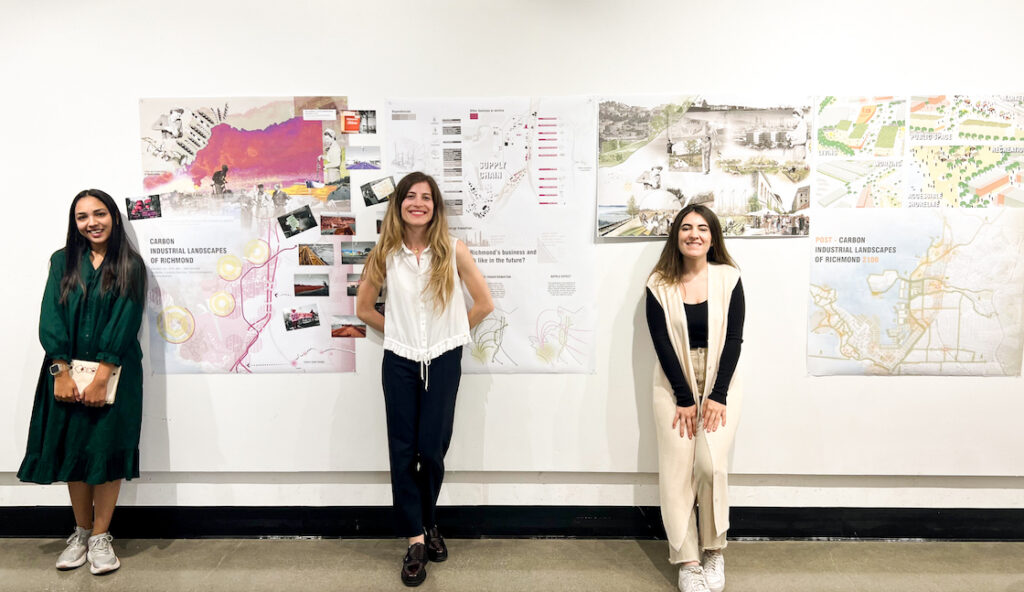
For your final project, you have a choice of two different plans: an Advanced Design Project (Plan I), filed with the MUD program or a Thesis-Design Project (Plan II), filed with the Graduate Division.
Advanced Design Project (Plan I)
The Advanced Design Project (Plan I) starts with a specific site, program or design problem. It is explored through extensive site analysis, review and analysis of relevant precedents, the development of design alternatives leading to a design proposition that addresses the challenges of the site and problem.
- Requirements
- Schedule
Students will form a committee including at least two members. Advisors can be from the MUD program, other departments, or professionals with expertise in their project. The work leads to an Advanced Design Project report, a document that includes all the drawings from the final presentation and a brief written description that describes the project and the design approach and concept, i.e., the design project. It is filed with the MUD program. While conforming to proper scholarly conventions, the format and graphic design is up to the student.
A preliminary design proposal is prepared during the fall semester (in ENV DES 251) and presented to the MUD faculty at the end of the semester. Students must have formed their committee and identified their Chair by the end of the Fall semester. The work is finalized during the spring semester (in ENV DES 253) and students present their completed Advanced Design Projects at a final review with MUD faculty, local professionals, and alumni at the end of the Spring semester. An electronic file of the Advanced Design Project is due at the end of the Spring semester.
Thesis Project (Plan II)
The Thesis Project (Plan II) starts with a topic or issue and a set of related questions. It is explored through a review of relevant scholarly literature, applicable case studies and logical analysis of the discourse in the topic area. The exploration leads to a design proposition (or thesis) that demonstrates how the exploration is transformative in the creation of urban places. It must demonstrate its impact through a design that engages the spatial and environmental analysis of a particular site and context.
- Requirements
- Schedule
Students must form a committee with a minimum of three members of the Berkeley Academic Senate including at least two from the MUD program. The thesis is a written document that along with the drawings presented at the final review is filed with the Graduate Division on their filing date and is archived in the CED library. The thesis must conform to proper scholarly conventions and satisfy the style guidelines of the Graduate Division.
A preliminary thesis proposal is prepared during the fall semester (in ENV DES 251) and presented to the MUD faculty at the end of the semester. Students must have formed their committee and identified their Chair by the end of the Fall semester. They develop their thesis during the spring semester (in ENV DES 252).
The thesis is finalized during the spring semester (in ENV DES 253) and a finished draft must be completed and signed off on by each student’s Committee and filed by the end of spring semester.
Students present their final thesis project at a review with MUD faculty, local professionals, and alumni. The final thesis document must adhere to Graduate Division standards and be approved by the Graduate Division before a MUD degree can be awarded.
STUDENT WORK
Careers
Students who graduate from Berkeley’s Master of Urban Design program take the lessons they learned in California and apply them in other parts of the country — and the world — that are also seeking sustainable forms of human-centered urban development. You can find our alums working at large and small firms and municipal agencies, heading their own practices, teaching, and starting nonprofits.

“The program provides us with the tools to pursue a courageous future that advocates for spatial equity and resilience. We envision ourselves contributing to city development and inclusive design within government, private firms, and nonprofits.”
Financing Your Education
We are committed to recruiting students of outstanding achievement and potential, regardless of ability to pay.
- Fees + Financial Aid
- Arcus Social Justice Corps Fellowship
In addition to tuition, UC Berkeley students pay several types of fees, including a campus fee, student services fee, and others. Students enrolled in professional degree programs, including the MUD, are also charged Professional Degree Supplemental Tuition (PDST).Find current tuition and fee information at Office of the Registrar.
The cost of the MUD program is contingent upon resident status, summer class units, and campus fees. Non-residents should expect to pay approximately $40,000 in tuition and fees while residents should expect to pay approximately $28,000. For a more accurate cost projection, add the cost of the MUD program during the regular school year (fall and spring) to the cost of your summer units, along with listed campus fees. MUD program costs (during the school year) are listed on UC Berkeley’s Fee Schedule page under Graduate: Professional – College of Environmental Design. MUD program costs during the summer can be calculated on the Application and Fees section of UC Berkeley’s Summer Sessions website. The MUD program requires you take at least 8 units in the summer. You may take additional elective units if you so choose, with the total number of summer units determining the cost for that term.
If you are applying to one of CED’s master’s degree programs and intend to pursue social justice work after graduation, we encourage you to apply for the Arcus Social Justice Corps fellowship.
If you plan to pursue social impact work after earning your degree, we encourage you to apply for the Arcus Social Justice Corps fellowship, which provides full funding so you can graduate debt-free. Please note: the Arcus Fellowship is available only to domestic students.
UC Berkeley begins accepting applications in early September for the following fall term only (no spring admissions). The fall semester begins in mid-August.
HOW TO APPLY
We recommend you start the application process as soon as possible. As a prospective graduate student, you’ll submit your application through UC Berkeley’s Graduate Division. You’ll find lots of useful information on the Graduate Division website, including application instructions and information about funding your education.
- Review admissions requirements on the Graduate Division website
- Gather materials:
- Unofficial transcript(s) for each prior college or university attended and degree certificate(s) (only if international applicant).
- Statement of Purpose. For tips on writing the Statement of Purpose, please see Writing the Statement of Purpose on the UC Berkeley Graduate Division website.
- Personal Statement. See prompt below. For tips on writing a Personal History Statement, please see the Personal Statement Guide on the UC Berkeley Graduate Division website.
- Contact information for three recommenders
- Resume/CV
- Evidence of English language proficiency, if applicable. For waiver eligibility, visit the Graduate Division website. Please note, Urban Design requires a TOEFL score of 100. Our IELTS score requirement is the same as the Graduate Division’s
- Portfolio – Up to 20 pages, single page. You may choose whichever orientation illustrates your work the best, but it must be the same orientation throughout.
- Information about studio coursework
- List of relevant publications or presentations
- List of honors/awards
- URL of website where your work is published, if applicable
- Start your application on the Graduate Division website. You do not have to complete the entire application at one time: we recommend you start your application and review it as soon as possible.
- Scroll down and select Master of Urban Design (MUD).
- Pay the application fee. Please note that only domestic applicants are eligible to apply for a Graduate Division fee waiver.
- Submit application. Allow yourself at least one hour prior to the deadline to submit your application. Late applications or changes to the application after the deadline will NOT be accepted.
- After submitting your application, you will receive an email from UC Berkeley’s Graduate Admissions Office confirming your submission.
- We strongly encourage you to log back into your application to monitor the status of materials received/processed, such as fee waivers, test scores, and recommendations.
- We send admissions decisions, along with notification of fellowship awards, in early to mid March.
Only online applications (including letters of recommendation) are accepted. All documents, regardless of language of instruction, must be translated into the English language. Transcripts, diplomas, and certificates should be provided in the original language of instruction AND in English. Transcripts must show your full name, degree conferral date, and degree.
Admissions
The Master of Urban Design (MUD) program is intended for exceptionally qualified post-professional students who already have professional work experience. Students must demonstrate evidence of high-quality work and potential for development based on the grade-point average, TOEFL/IELTS scores, letters of recommendation, and examples of work.
Admission to the Master of Urban Design program requires a prior five-year professional degree in Architecture (BArch or MArch), Landscape Architecture (BLA or MLA), or City and Regional Planning (MCP, MUP or equivalent with a strong design background). Professional experience after completion of the professional degree is highly recommended.
